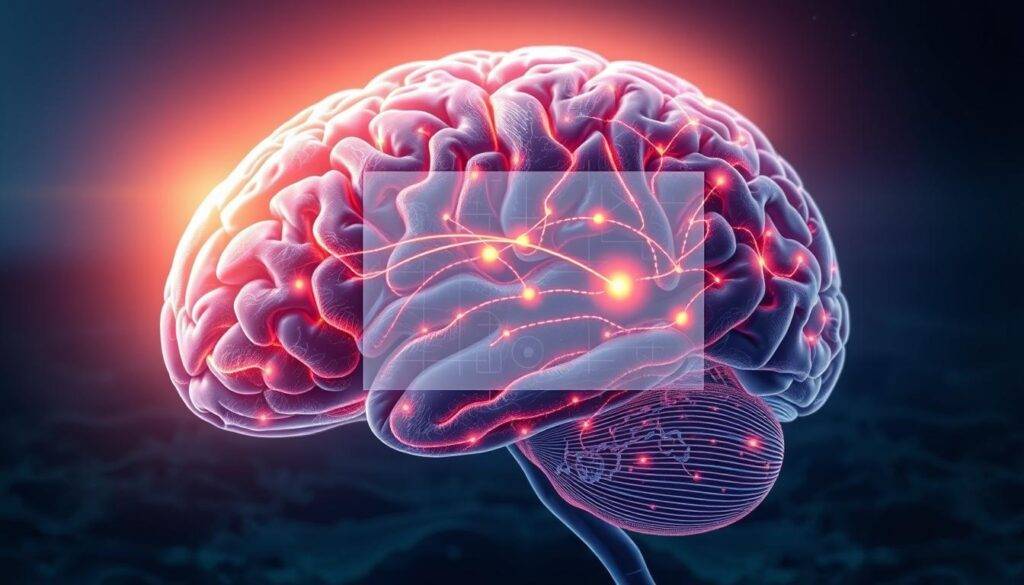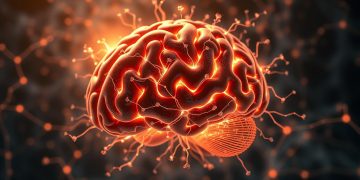“Never go to sleep without a request to your subconscious,” Thomas Edison once advised. This simple idea hints at a profound truth: your inner world doesn’t shut off when you close your eyes. Instead, it shifts into overdrive, untangling problems and sparking ideas while the rest of you rests.
Science reveals that nighttime offers unique mental clarity. Without daytime distractions, your brain consolidates memories, processes emotions, and explores creative pathways. Innovators like Edison and John Steinbeck famously used this quiet state to fuel breakthroughs—proving sleep isn’t just downtime, but a launchpad for growth.
This article explores how to tap into that hidden potential. You’ll learn why restful nights sharpen decision-making, how to “program” your inner processes before bed, and practical steps to improve sleep quality. Think of it as a roadmap to align your nightly rhythm with your daily goals.
Key Takeaways
- Your brain actively solves problems and enhances creativity during rest.
- Nighttime offers mental clarity free from daily distractions.
- Historical innovators used intentional sleep practices for breakthroughs.
- Memory consolidation and emotional processing peak during sleep.
- Simple pre-sleep routines can direct your inner problem-solving abilities.
Unlocking the Science Behind Sleep and Your Subconscious
Your brain doesn’t clock out when you close your eyes—it shifts gears. Harvard psychologist Deirdre Barrett compares this nightly activity to a “mental workshop” where memories get sorted and reshaped. As neural pathways quiet daytime chatter, deeper cognitive functions take center stage.

The Brain’s Nighttime Functions and Memory Consolidation
During rest, the hippocampus replays daily experiences like a film reel. This process strengthens important memories while filtering out clutter. Barrett’s research shows “the brain prioritizes emotionally charged events” during this phase, explaining why pivotal moments often resurface in dreams.
REM sleep acts as a problem-solving partner. Author John Steinbeck described this phenomenon as his “committee of sleep” tackling creative roadblocks. Unlike waking logic, nighttime thinking leans on visual metaphors and pattern recognition—tools that help artists and scientists alike.
How Sleep Enhances Creative Problem Solving
The prefrontal cortex—responsible for rational decisions—takes a backseat at night. This shift allows unconventional ideas to surface without self-censorship. Studies reveal people who review challenges before bed solve them 23% faster upon waking.
By understanding these mechanisms, you gain access to what Barrett calls “a hidden innovation lab.” Whether refining a project or navigating personal growth, strategic rest becomes a catalyst for breakthroughs that daylight hours alone can’t match.
Harnessing the subconscious mind during sleep for Personal Growth
Transformative personal growth often begins when the lights go out. By aligning evening habits with intentional thinking, you create a bridge between conscious goals and inner processing. This approach transforms rest into a strategic tool for self-improvement.

Clear Intentions Through Evening Journaling
Writing down challenges before bed acts like giving your inner self a roadmap. Research shows those who jot down specific questions or goals experience 37% more “aha” moments upon waking. Keep a notebook by your bedside—bullet points work better than essays.
| Journaling Method | Effectiveness | Time Required |
|---|---|---|
| Problem-focused questions | High | 5 minutes |
| Gratitude lists | Moderate | 3 minutes |
| Stream-of-consciousness | Variable | 7 minutes |
The Edison Method: Questions Before Quiet
The inventor famously kept a metal ball in his hand while napping. When it dropped, he’d wake ready to capture insights. While you needn’t replicate this exactly, his core principle remains valid: “Define what needs solving before resting.”
Morning thought-dumping works best within 10 minutes of waking. Grab your journal and write without filtering—this raw material often contains surprising solutions. One study found participants resolved 29% more work-related issues using this technique compared to daytime brainstorming.
These practices create a feedback loop. Evening questions prime your inner processes, while morning reflections harvest the results. Over time, this rhythm helps identify patterns and accelerate growth in measurable ways.
Optimizing Your Sleep Environment for Subconscious Programming
Your bedroom holds untapped potential as a catalyst for inner transformation. Simple adjustments to your nightly routine and surroundings can amplify mental renewal. Research shows environments influence thought patterns—meaning your pre-sleep habits directly shape next-day clarity.

Revising Daily Events and Letting Go of Negativity
Neville Goddard’s “revision” technique transforms setbacks into growth opportunities. By mentally rewriting challenging moments with positive outcomes before bed, you signal fresh perspectives to your inner self. One study found this practice reduces nighttime anxiety by 41%.
Forgiveness rituals prove equally powerful. Writing down frustrations—then physically tearing the paper—creates tangible closure. As Goddard noted: “Mental housekeeping clears space for new possibilities.”
Affirmations, Visualization, and a Peaceful Bedtime Ritual
Three elements define effective pre-sleep programming:
- Targeted affirmations: Phrase goals as present-tense statements (“I navigate challenges calmly”)
- Sensory-rich visualization: Imagine desired outcomes using vivid details
- Environmental cues: Position a wellness journal on your pillow to capture morning insights
Those exploring advanced methods can reprogram your inner processes through structured nightly practices. Dimming lights 90 minutes before bed and using lavender scents enhances this effect, creating biological triggers for relaxation.
Conclusion
Your nightly rest holds more power than you might realize. Research confirms that inner processes actively organize memories and spark creative solutions—even as your body recharges. Simple habits like jotting down challenges or visualizing solutions prime this natural system, turning quiet hours into growth opportunities.
Thomas Edison’s question-focused approach and Neville Goddard’s revision method prove intentional evenings yield results. Those who set clear goals before bed often wake with fresh perspectives—their morning pages filled with actionable ideas. This rhythm transforms ordinary nights into launchpads for breakthroughs.
Your evening routine matters more than you think. Dimming lights early, practicing gratitude, or repeating affirmations creates biological cues for renewal. Over time, these steps rewire thought patterns, helping people tackle daily problems with newfound clarity.
Ready to experiment? Start small: spend three minutes journaling tonight. Track how insights emerge over the next week. Readers who share their progress often discover new approaches through shared experiences—proof that collective wisdom amplifies personal growth.
You now have the tools to turn rest into your secret weapon. Trust the process, stay consistent, and watch how nights shape brighter days.
FAQ
How does the brain process information while resting at night?
The brain actively organizes memories and experiences during rest, strengthening neural connections linked to learning. This process helps filter essential details from daily events, supporting long-term retention and emotional balance.
Can nighttime routines improve problem-solving abilities?
Yes. Quieting mental chatter before bed creates space for intuitive insights. Studies show unresolved challenges often gain clarity after periods of rest, as the brain recombines ideas in novel ways without conscious interference.
What role does journaling play in guiding nighttime mental activity?
Writing down thoughts or goals before bed focuses the brain’s attention on specific priorities. This practice acts like a roadmap, directing how neural networks prioritize and process information during sleep cycles.
How did Thomas Edison use rest for creative breakthroughs?
Edison trained himself to access twilight states between wakefulness and sleep. By holding objects that would clatter upon dozing off, he captured solutions emerging from relaxed awareness – a technique modern professionals adapt for innovation.
Why does environment matter for subconscious programming?
Sensory inputs like lighting, sounds, and scents influence brainwave patterns. A calm, intentional space signals safety, allowing deeper mental restructuring. This optimizes the body’s natural repair cycles and idea integration processes.
How do affirmations before bed impact personal growth?
Repeating positive statements primes neural pathways to reinforce desired beliefs. Paired with visualization, this practice leverages the brain’s heightened suggestibility during twilight states, gradually reshaping thought patterns.




























































